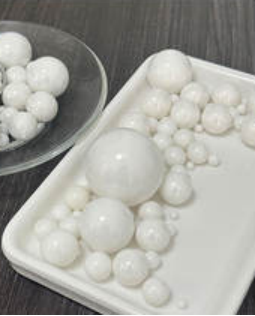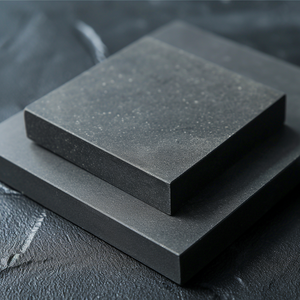Discover Premium Ceramic Products | Durability & Elegance United | Advanced Ceramics
1. Introduction
Just 24 hours ago, a major foundry in Ohio reported a production delay due to unexpected silicon carbide crucible failures during aluminum melting—a reminder of how critical proper handling is in industrial settings. While silicon carbide crucibles are prized for their thermal shock resistance and durability, misuse can lead to costly downtime.

Whether you’re in metallurgy, ceramics, or lab research, knowing how to correctly use and care for your silicon carbide crucible can save time, money, and materials. This guide walks you through best practices, common pitfalls, and maintenance tips.
2. Understanding Your Silicon Carbide Crucible
A silicon carbide crucible is made from high-purity silicon carbide—a compound known for exceptional hardness, thermal conductivity, and resistance to oxidation up to 1,600°C (2,912°F). Unlike standard clay-graphite crucibles, silicon carbide versions offer longer service life and cleaner melts.
Don’t confuse it with a silicon nitride crucible, which is used in more specialized, ultra-high-purity applications. While both are advanced ceramics, silicon nitride offers better resistance to thermal shock in rapid cycling but is costlier. Similarly, boron carbide vs silicon carbide debates often arise—but boron carbide is harder and more expensive, typically reserved for armor or neutron absorption, not melting.
3. Step-by-Step: How to Use a Silicon Carbide Crucible Safely
3.1 Pre-Use Preparation
Always inspect your silicon carbide crucible for cracks, chips, or glaze damage before use. Even hairline fractures can cause catastrophic failure under heat.
- Never use a wet or damp crucible—moisture turns to steam and can cause explosive spalling.
- Preheat gradually if the crucible is new or has been stored in a humid environment.
3.2 Proper Heating Protocol
Ramp up temperature slowly during the first use (‘seasoning’). A recommended schedule: 150°C for 30 minutes, then 300°C for 30 minutes, then 600°C for 1 hour, before reaching operational temperature.
Avoid direct flame impingement on one spot—rotate the crucible or use even heating from silicon carbide burner nozzles to distribute heat uniformly.
3.3 Loading and Melting

Fill only to 70–80% capacity to prevent overflow. Use clean, dry charge materials to avoid chemical reactions that degrade the crucible lining.
Never add cold metal to a hot crucible—this causes thermal shock. Preheat scrap or ingots before charging.
4. Common Problems and How to Fix Them
4.1 Cracking or Spalling
This usually results from rapid temperature changes or mechanical impact. Solution: Always follow gradual heating/cooling cycles. Store crucibles on soft, non-abrasive surfaces like ceramic fiber boards—not on concrete or steel.
4.2 Glaze Degradation or Erosion
Aggressive slags or fluxes can eat away at the protective glaze. Use compatible fluxes and avoid overuse. Consider upgrading to an RBSiC (reaction-bonded silicon carbide) silicon carbide tile block lining for harsher environments.
4.3 Contamination of Melt
If your melt shows unexpected inclusions, the crucible may be shedding particles. This often happens when using low-quality crucibles or exceeding temperature limits. Stick to reputable suppliers of high-purity silicon carbide.
5. Cleaning and Storage Tips
After use, let the crucible cool naturally in a dry, draft-free area. Never quench in water.
Remove residues with a soft brush or non-metallic scraper. Avoid acid cleaning unless specified by the manufacturer—some silicon carbide formulations can be sensitive.

Store upright in a dry cabinet. Stack carefully—never place heavy items like silicon carbide bricks or silicon carbide ceramic columns on top.
6. When to Replace Your Crucible
Replace if you notice:
- Deep cracks or structural deformation
- Persistent contamination despite cleaning
- Thinning walls (measure thickness periodically)
While silicon carbide crucibles last longer than graphite alternatives, they aren’t immortal. Regular inspection is key.
7. Bonus: Silicon Carbide Beyond Crucibles
You’ll often see silicon carbide in other high-temp components: silicon carbide ceramic tubes for furnaces, silicon carbide thermocouple protection tubes, and even silicon carbide ceramic baking dishes for home use (like silicon carbide ceramic casserole dishes or oven-safe silicon carbide ceramic plates for dinner).
In plumbing, silicon carbide ceramic disc taps and silicon carbide ceramic grinding discs are common due to wear resistance. And in art studios, silicon carbide ceramic plates for painting or silicon carbide ramekin ceramic dishes showcase its versatility.
But remember: a silicon carbide crucible is engineered for extreme conditions—don’t substitute it with kitchenware-grade items in industrial settings!
8. Conclusion
Using a silicon carbide crucible correctly isn’t just about following steps—it’s about respecting the material’s limits and strengths. With proper handling, your crucible can deliver hundreds of melts without issue. Avoid thermal shock, inspect regularly, and never cut corners on preheating. When in doubt, consult your supplier—especially if you’re comparing options like custom silicon nitride heat shields or high purity silicon nitride powder market alternatives for ultra-sensitive processes.
Our Website founded on October 17, 2012, is a high-tech enterprise committed to the research and development, production, processing, sales and technical services of ceramic relative materials such as How. Our products includes but not limited to Boron Carbide Ceramic Products, Boron Nitride Ceramic Products, Silicon Carbide Ceramic Products, Silicon Nitride Ceramic Products, Zirconium Dioxide Ceramic Products, etc. If you are interested, please feel free to contact us.


